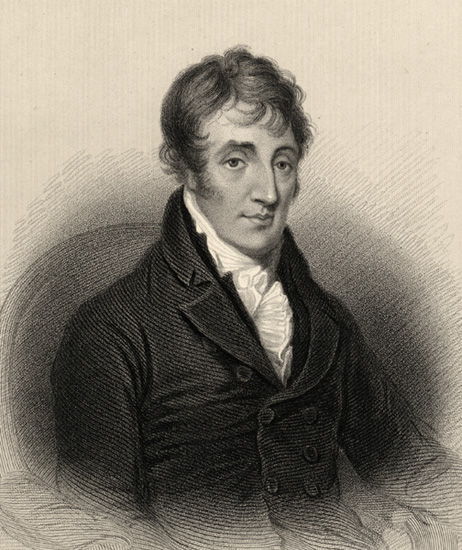
Rev. James Grahame, engraved by Samuel Freeman after an unknown artist (1835?)From: James Grant Wilson, The Poets and Poetry of Scotland (London: Blackie & Son, 1876-77) Sir Walter Scott was a great admirer of the Rev. James Grahame’s The Sabbath (1804), 'a very pretty poem' which he recommended to James Currie and Anna Seward in letters of 25 February and 21 March 1805. John Ballantyne and Co., in which Scott held a half-share, published Grahame's British Georgics (1809). Grahame (1765-1811) was a fellow Advocate who abandoned the Bar to take orders as an Anglican clergyman. Scott sought unsuccessfully to use his influence to have Grahame elected to the Lectureship of St George’s Chapel, Edinburgh, in October 1808. On his death in 1811, Scott lamented him as 'one good man lost to the best of possible worlds' who 'had conscience and modesty enough for a whole General Assembly or Convocation' (letter to Charles Kirkpatrick Sharpe, 4 December 1811). He regretted however that his 'principles and prejudices and feelings made an odd jumble', hampering both his legal and ecclesiastical careers. He was a Jacobite yet a Whig, an Anglican yet an apologist for the Covenanters. Scott recalled teasing him for his detestation of his own kinsman John Graham of Claverhouse, scourge of the Covenanters (portrayed by Scott in Old Mortality). Grahame is also mentioned in Letters on Demonology and Witchcraft as sharing the family superstition that the colour green is fatal to the Grahame clan, and having his library table covered instead in blue or black cloth. The engraving was made from 'a miniature in possession of Robert Grahame of Whitehill'. It was probably first published in Robert Chambers's Biographical Dictionary of Eminent Scotsmen (1835). |